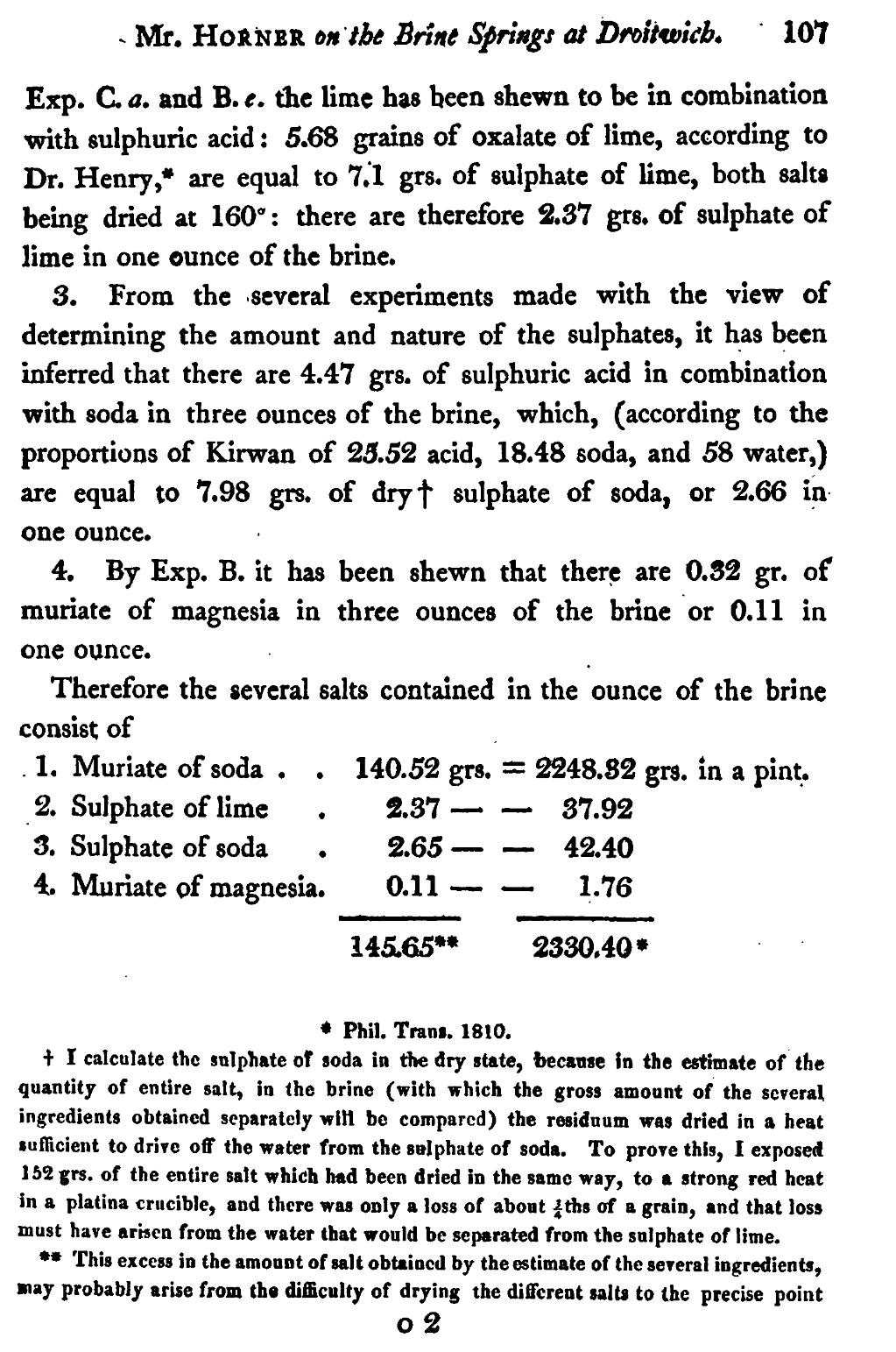Exp. C. a. and B. c. the lime has been shewn to be in combination with sulphuric acid: 5.68 grains of oxalate of lime, according to Dr. Henry,[1] are equal to 7.1 grs. of sulphate of lime, both salts being dried at 160°: there are therefore 2.37 grs. of sulphate of lime in one ounce of the brine.
3. From the several experiments made with the view of determining the amount and nature of the sulphates, it has been inferred that there are 4.47 grs. of sulphuric acid in combination with soda in three ounces of the brine, which, (according to the proportions of Kirwan of 25.52 acid, 18.48 soda, and 58 water,) are equal to 7.98 grs. of dry[2] sulphate of soda, or 2.66 in one ounce.
4. By Exp. B. it has been shewn that there are 0.32 gr. of muriate of magnesia in three ounces of the brine or 0.11 in one ounce.
Therefore the several salts contained in the ounce of the brine consist of
| 1. Muriate of soda | 140.52 | grs. | = | 2248.82 | grs. in a pint. |
| 2. Sulphate of lime | 2.37 | = | 37.92 | ||
| 3. Sulphate of soda | 2.65 | = | 42.40 | ||
| 4. Muriate of magnesia. | 0.11 | = | 1.76 | ||
| ──── | ──── | ||||
| 145.65[3] | 2330.40[4] | ||||
- ↑ Phil. Trans. 1810.
- ↑ I calculate the sulphate of soda in the dry state, because in the estimate of the quantity of entire salt, in the brine (with which the gross amount of the several ingredients obtained separately will be compared) the residuum was dried in a heat sufficient to drive off the water from the sulphate of soda. To prove this, I exposed 152 grs. of the entire salt which had been dried in the same way, to a strong red heat in a platina crucible, and there was only a loss of about 34ths of a grain, and that loss must have arisen from the water that would be separated from the sulphate of lime.
- ↑ This excess in the amount of salt obtained by the estimate of the several ingredients, may probably arise from the difficulty of drying the different salts to the precise point implied in those experiments by which the proportions of their coefficient parts have been determined.
- ↑ I have already stated, § 10. that there are 2289.75 grs. of entire salt in a pint of the brine from Walker's pit. In estimating that quantity, I made use of a cubic inch measure, whereas in the other case (by inadvertence) an ounce measure was employed. The difficulty of measuring the quantity very accurately in both cases is very great, and in a saturated solution, au imperceptible variation in bulk would become very sensible in weight.
o2
